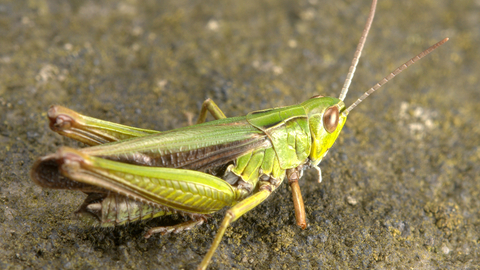
Common green grasshopper by Brian Eversham
Common green grasshopper
Scientific name: Omocestus viridulus
The Common green grasshopper can be found in damp meadows and woodland rides throughout summer. Males can be seen rubbing their legs against their wings to create a 'song' for the females.
Top facts
Category
Stats
Length: 1.4-2.3cmConservation status
Common.
